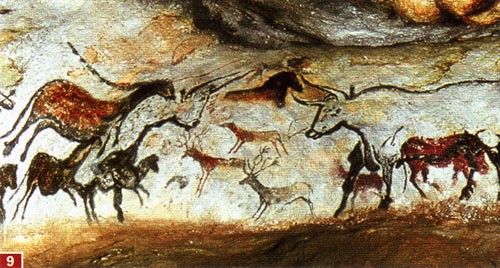for your Glossarygeneration
culture philosophy spirituality politics legalism colonisation myths globalisation secularisation initiate endorse adapt adopt distinctiveness
|
Area of Study 2 Religion Through the Ages Area of Study 2
Religion through the ages In this area of study students investigate how society and religion influence each other. They consider the factors that influence the roles of religion and the effects that developments in society might have on religion. Spirituality and religion have been an integral part of the development of human societies, forming part of cultural knowledge and understanding that is passed from generation to generation through a process of spiritual and religious socialisation. As people spread across the globe, they encountered and exchanged religious and cultural ideas, which informed the development of aspects of religion. Over time, spiritualities, religious traditions and religious denominations have encountered challenges from philosophical and spiritual movements, political regimes, legal structures, scientific ideas, colonisation, national myths, globalisation, secularisation, technological developments and historical events. These encounters have led to spiritualities, religious traditions and religious denominations taking various roles to initiate, endorse, modify or resist the spread of ideas and movements in society. At times in history some spiritualities, religious traditions and religious denominations have lost the authority and power to explain meaning for their society and have been abandoned; other spiritualities, religious traditions and religious denominations have adapted and been resilient or were re-established in a different form. Some spiritualities, religious traditions and religious denominations have been able to adopt and adapt beliefs, ideas and practices from other religious traditions while retaining their distinctiveness. | ||||||
|
Describe the various elements of the ritual and its meanings.
Use your findings to explain how spirituality and religion have been an integral part of the development of human societies as cultural knowledge and understanding is passed from generation to generation through a process of socialisation. Outcome 2Outcome 2
On completion of this unit the student should be able to discuss the changing roles of religion and the interrelationship between religion and society over time. To achieve this outcome the student will draw on key knowledge and key skills outlined in Area of Study 2. |
Key knowledgeKey knowledge
· how spiritual and religious ideas and religious traditions or religious denominations have played roles in society over time · the spiritual and religious ideas that pass from one generation to the next via a process of socialisation that includes religion · how developments in technology, philosophy and science from both within and outside religious traditions have affected roles and relevant aspects of religion in society · other ideas and movements that have influenced and are influencing roles and relevant aspects of religion in society · the reasons why spiritualities, religious traditions and religious denominations were resilient, changed or adapted, or ceased to exist · the reasons why some ideas from spiritualities, religious traditions or religious denominations become part of other spiritualities, religious traditions or religious denominations |
Key skillsKey skills
· identify the factors that influence roles of religion over time · summarise the spiritual and religious ideas that pass from one generation to the next via a process of socialisation that includes religion · explain the effects that developments in society may have on religion and vice versa · discuss roles that spiritualities, religious traditions and religious denominations play in initiating, endorsing, modifying or resisting the spread of ideas and movements in society · discuss the reasons why spiritualities, religious traditions and religious denominations were resilient, changed or adapted, or ceased to exist and the relevant aspects affected · interpret, synthesise and apply primary and secondary source material |


